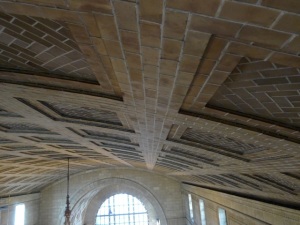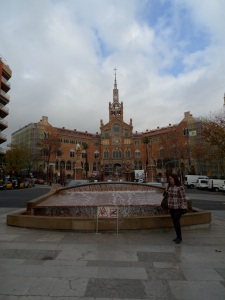The third biennial meeting of The Construction History Society of America was held at Massachusetts Institute of Technology in Cambridge MA November 2-3, 2012. This scholarly forum is a venue for professionals from a wide range of construction related disciplines to come together to exchange ideas and research findings about their passions for design, engineering, and preservation.
This year, in conjunction with the opening of the exhibit, Palaces for the People: Guastavino and America’s Great Public Spaces at Boston Public Library, all of Saturday’s agenda was devoted to the exploration of topics pertaining to his work.
VA’s presentation, Evaluation of In-Service Tile Vaults, was based on findings from a pilot study performed on a mockup of a Guastavino vault with simulated faults, such as voids and delaminations, built into the vault as it was being constructed. The abstract and full report are included below.
Abstract
Presentation by Kelly Streeter, P.E. and Kent Diebolt
3rd Biennial Meeting of the Construction History Society of America
Cambridge, MA | November 3, 2012
In response to aging infrastructure in the United States, nondestructive evaluation (NDE) is increasingly used as a monitoring tool, a method of investigation and in a quality control capacity. The adaptation of existing NDE techniques to the evaluation of historic architectural and structural materials provides great potential for increasing the information available to professionals evaluating historic structures.
The process of addressing the significant public safety concerns of aging tile assemblies, such as Guastavino tile vaults, can be complicated by the difficulty of access – the undersides of the tiles often soar over heavily-used public spaces commonly filled with pews and other structures which make temporary scaffolding problematic. The proposed sounding method examines the feasibility of evaluating Guastavino tile vaults from the top, which would allow architects and engineers to evaluate the vaults from the often easily-accessible attic spaces, thereby reducing the need for expensive and disruptive scaffolding systems for evaluation. This could also facilitate more frequent periodic inspections.
Engineers evaluating the structural condition of existing tile vaults often need to determine construction details, including combined wythe and mortar bed thicknesses, in order to model vaults. Hammer sounding is frequently employed to qualitatively evaluate the condition of the soffit layer of Guastavino tile. The ultimate goal of this research path and the basis of this pilot study on the ultrasonic investigation of Guastavino tile vaults was the removal of the aural subjectivity inherent in hammersounding by the quantification of this same phenomenon: the differing acoustic quality of delaminated and bonded tiles. By capturing and quantifying the impact response of steel hammer taps with an ultrasonic transducer and data acquisition system, the raw signals can be analyzed in the frequency domain using modern computational methods in an effort to characterize vault construction and condition.







